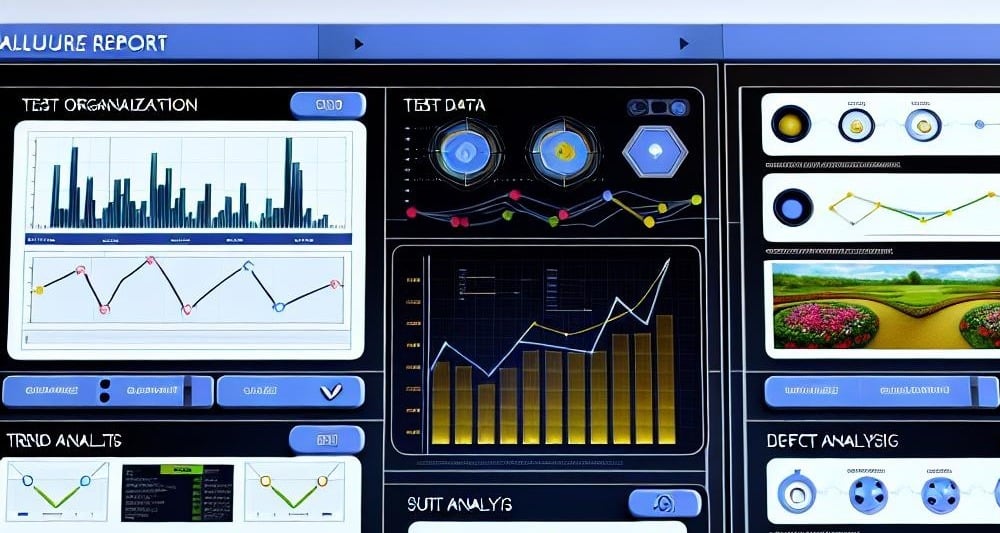IT Integration basics: SOAP or REST? A beginner’s guide to integrations
In our new blog article series, we will dive into the topic of IT systems integration. We will begin by describing integration concepts for anyone...
![]() The Cloud People
•
8 min read
•
Apr 29, 2024
The Cloud People
•
8 min read
•
Apr 29, 2024

Automated testing is an essential component in software development, ensuring the quality and reliability of the software. The Allure Report is a tool that has significantly enhanced the control and management of automated testing. This blog post will provide an in-depth exploration of the Allure Report, including its installation process, benefits, and compatibility with various testing frameworks.
Allure Report is an open-source framework designed to create test execution reports that are clear, concise, and attractive. It provides a visual and user-friendly interface that allows developers and testers to obtain detailed insights into what is happening in their tests. With its unique features, Allure Report has become a popular choice among developers for reporting in automated testing.
Allure Report is a powerful tool that can enhance your testing process in numerous ways. From detailed test analysis and visual reporting to seamless integration and customization, Allure Report offers a range of benefits that can help you improve the efficiency and effectiveness of your testing.
Installing Allure Report in a project is a simple process. Here are the basic steps needed to install and generate reports. Keep in mind that you need to adjust the configurations for different projects
While there isn't a direct guide available on the Google Cloud documentation, I can provide a general outline of the steps you would need to follow:
Please note that these steps are quite general and the exact commands you'll need to run will depend on the specifics of your setup, such as the operating system you're using and the configuration of your tests. It's also worth noting that while this setup will allow you to view your Allure Reports, it won't automatically update them when new tests are run - you'll need to set up a continuous integration (CI) pipeline to do this. Remember, Allure Report can be integrated into any testing framework, and the installation process may vary slightly depending on the specific framework you are using.
In the Cloudia project we’ve placed an allure server on Google Kubernetes Engine. By doing that, we reuse already existing infrastructure which enables us to expose the server with test reports easily, secure it with Identity-Aware Proxy(IAP) and make it available via web browser.
The allure pod is also connected to GCS Bucket where we store our test reports. By grouping each test report by typer, date and id, it’s easy to navigate to get the exact test report we are looking for.
Entering the directory of a particular day there are directories with the test of a particular day. It also depends on our configuration and how many tests will be on a particular day.

Clicking on the selected folder takes you to the allure interface with a report on the individual status of the written tests for the day. In our interface configuration, the main page shows a side menu with many tabs, only some of which will be discussed. In the main area of the interface, you can see the date of the report along with the time it was created, the number of tests and the percentage of tests passed. In addition, you can see our test packages sorted into folders and subfolders, depending on the module being tested. Thanks to the coloring and counting, we have a preview of the status of the tests in each module. There is also a test trend graph, where we can see a preview with the trend of tests by day. In addition, a helpful widget in the interface is categories, where tests that have a defect are visible.

In this blog post, we will focus on two tabs: Categories, where we can analyze all the defects in our automated tests, and a tab suites, where you can find all the e2e tests we wrote in the playwright framework
This tab contains all the defects in our tests. Opening any defect displays information about the selected defect in the interface on the right. In the Overview tab, in addition to the defect itself, we can view the path to the file where the problem occurs. In addition, Allure allows us to trace all the steps in the test body. We can watch a video of our test executing the steps we wrote. We can also download the trace of our tests. In addition, it is possible to preview a screenshot of the place where the test failed to execute further.

The history tab allows us to preview the status of a particular test with specific dates and times of launch. In addition, the success rate of a given test is calculated.

The "Retries" tab in Allure reports is used to track and display information about attempts to restart tests that failed the first time.

The "Suites" tab in Allure reports is used to present organized information about the test suites that have been performed. "Suite" is a term used to describe a group of tests that are related and are typically run together.

Under the "Suites" tab, we can see a list of all the test sets that have been run, along with a summary of their results. For each test set, Allure displays the number of tests that passed, that failed, that were skipped, as well as the duration of the entire test set.

When you click on a specific test suite, you can see detailed information about each test in the suite, including a full description of the test, its status (e.g. success, failure, skip), duration, and any error or exception messages that may have occurred during test execution.
The "Suites" tab is very useful for quickly reviewing test results and identifying areas that may require additional attention or analysis.

With tests that have a status of failed, allure proves to be very helpful.

Allure allows us to preview what is wrong with the test, in addition, it creates a video file that shows the playback of the steps of our written test. This allows us to more quickly locate what could be a potential problem.

We can also download the entire trace of our test

Or just see a screenshot of where our test stopped working

Allure Report offers several benefits that make it a valuable tool for automated testing:
Allure Report is compatible with a wide range of testing frameworks, making it a versatile tool for any project. Here are some of the popular testing frameworks it can integrate with:
Allure Report is a powerful tool that enhances control over automated testing. With its detailed reporting, visual representation, and compatibility with various testing frameworks, it is an invaluable asset in any software development project. By integrating Allure Report into your project, you can ensure a smoother, more efficient testing process, leading to higher quality software.

In our new blog article series, we will dive into the topic of IT systems integration. We will begin by describing integration concepts for anyone...

With Service Operations, we are merging the ITSM and ITOM workflows and fostering comprehensive infrastructure management, synchronizing workflows...
